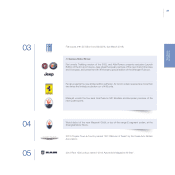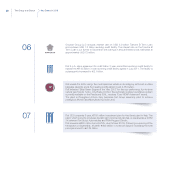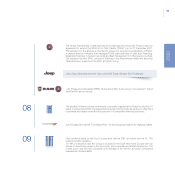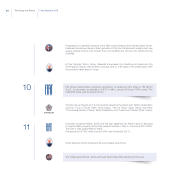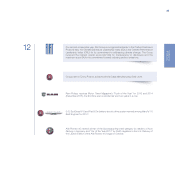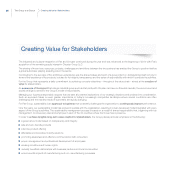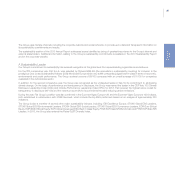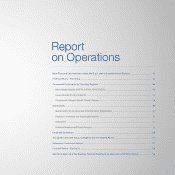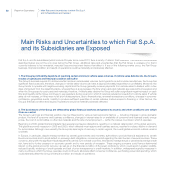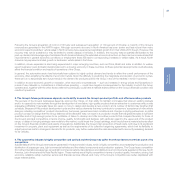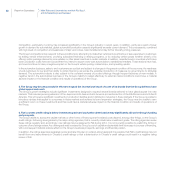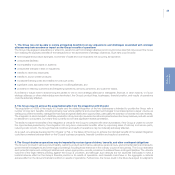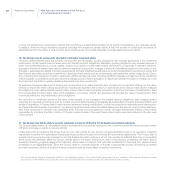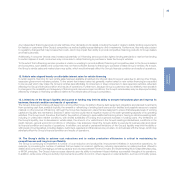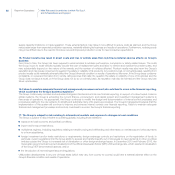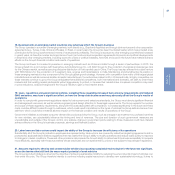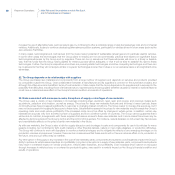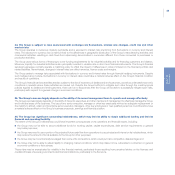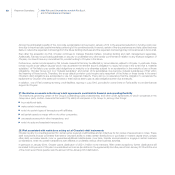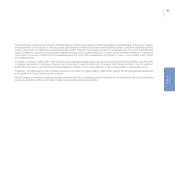Chrysler 2013 Annual Report Download - page 32
Download and view the complete annual report
Please find page 32 of the 2013 Chrysler annual report below. You can navigate through the pages in the report by either clicking on the pages listed below, or by using the keyword search tool below to find specific information within the annual report.
31
Report on
Operations
Following the Group’s acquisition of control of Chrysler and subsequent acquisition of 100 percent of Chrysler, a majority of the Group’s
revenues are generated in the NAFTA region. Although economic recovery in North America has been slower and less robust than many
economic experts predicted, vehicle sales in North America have experienced significant growth from their 2009-2010 trough. However, this
recovery may not be sustained or may be limited to certain classes of vehicles. In addition, the recovery may be partially attributable to the
pent-up demand and average age of vehicles in North America following the extended economic downturn so there can be no assurances that
improvements in general economic conditions or employment levels will lead to corresponding increases in vehicle sales. As a result, North
America may experience limited growth or declines in vehicle sales in the future.
In addition, slower expansion is also being experienced in major emerging countries, such as China, Brazil and India. In addition to weaker
export business, lower domestic demand also led to a slowing economy in these countries. All these potential developments could adversely
affect the financial condition and results of operations of the Group.
In general, the automotive sector has historically been subject to highly cyclical demand and tends to reflect the overall performance of the
economy, often amplifying the effects of economic trends. Given the difficulty in predicting the magnitude and duration of economic cycles,
there can be no assurances as to future trends in the demand for products sold by the Group in any of the markets in which it operates.
In addition to slow economic growth or recession, other economic circumstances — such as increases in energy prices and fluctuations in
prices of raw materials or contractions in infrastructure spending — could have negative consequences for the industry in which the Group
operates and, together with the other factors referred to previously, could have a material adverse effect on the Group’s financial condition and
results of operations.
3. The Group’s future performance depends on its ability to enrich the Group’s product portfolio and offer innovative products
The success of the Group’s businesses depends, among other things, on their ability to maintain or increase their share in existing markets
and/or to expand into new markets through the development of innovative, high-quality products that are attractive to customers and provide
adequate profitability. It generally takes two years or more to design and develop a new product, and a number of factors may lengthen that
schedule. Because of this product development cycle and the various elements that may contribute to consumers’ acceptance of new vehicle
designs, including competitors’ product introductions, fuel prices, general economic conditions and changes in styling preferences, an initial
product concept or design that the Group believes will be attractive may not result in a production model that will generate sales in sufficient
quantities and at high enough prices to be profitable. A failure to develop and offer innovative products that compare favorably to those of
the Group’s principal competitors, in terms of price, quality, functionality and features, with particular regard to the upper-end of the product
range, or delays in bringing strategic new models to the market, could impair the Group’s strategy, which would have a material adverse effect
on the Group’s financial condition and results of operations. Additionally, the Group’s high proportion of fixed costs, both due to its significant
investment in property, plant and equipment as well as the requirements of its collective bargaining agreements, which limit its flexibility to
adjust personnel costs to changes in demand for its products, may further exacerbate the risks associated with incorrectly assessing demand
for its vehicles.
4. The automotive industry is highly competitive and cyclical and the Group may suffer from those factors more than some of its
competitors
Substantially all of the Group’s revenues are generated in the automobile industry, which is highly competitive, encompassing the production and
distribution of passenger cars, light commercial vehicles and the related components and production systems. The Group faces competition
from other international passenger car and light commercial vehicle manufacturers and distributors and components suppliers in Europe, North
America, Latin America and the Asia Pacific region. These markets are all highly competitive in terms of product quality, innovation, pricing, fuel
economy, reliability, safety, customer service and financial services offered, and many of the Group’s competitors are better capitalized with
larger market shares.


